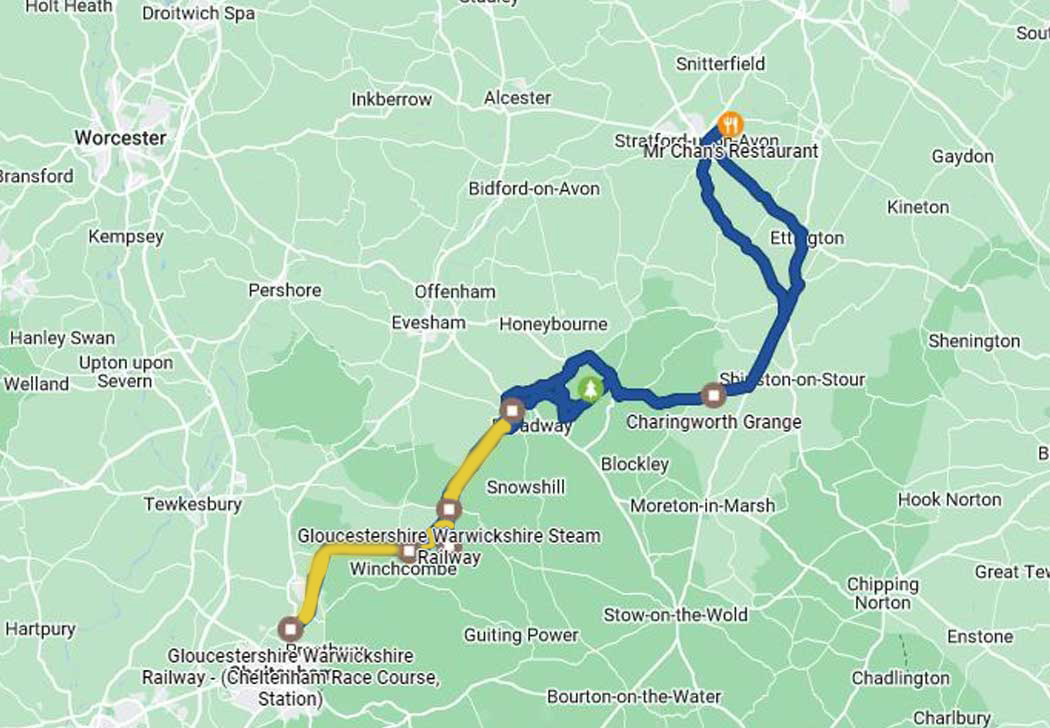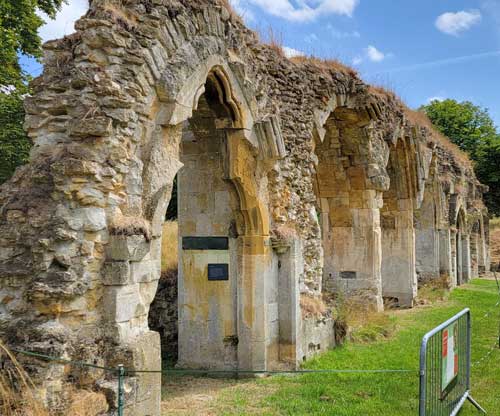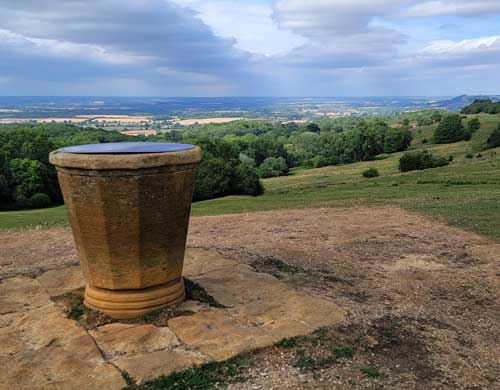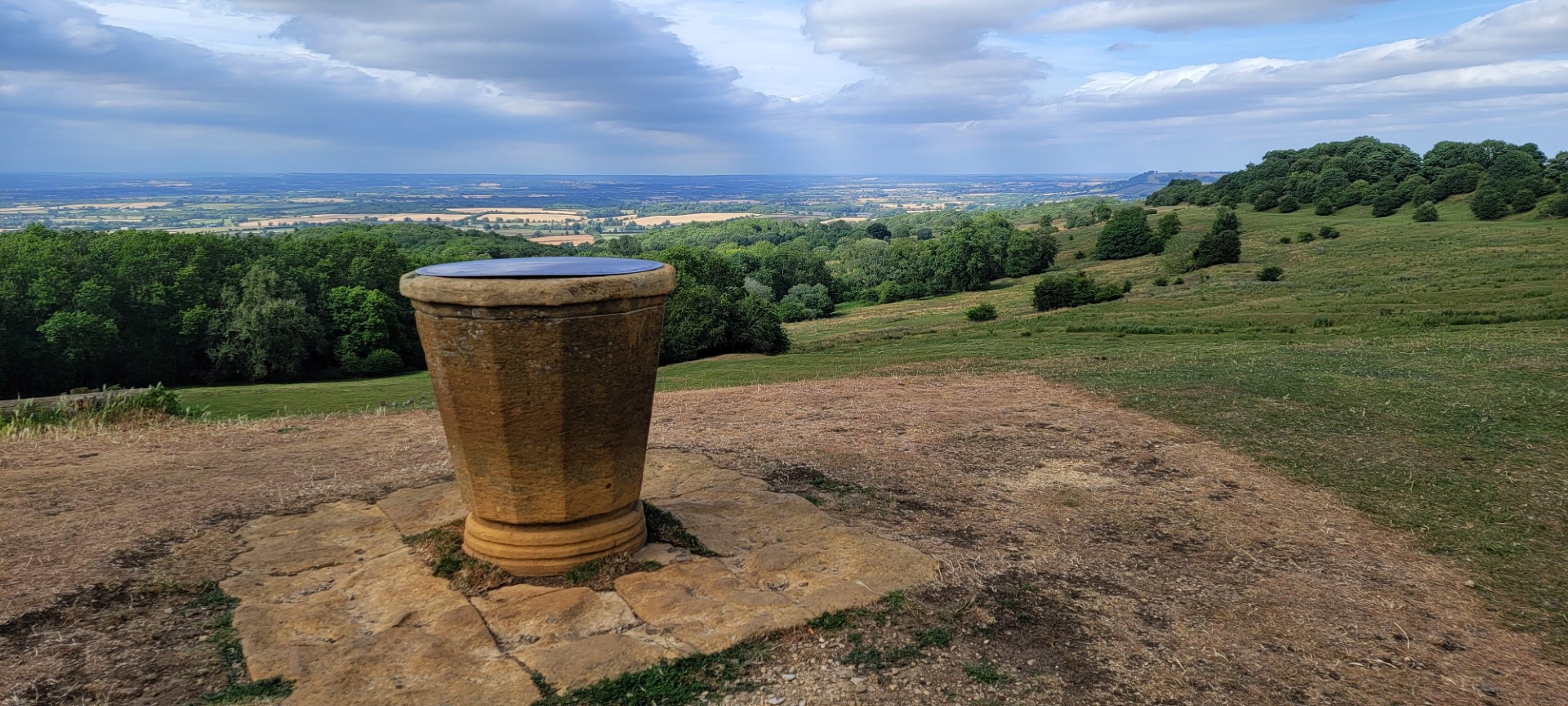England 2022
July 24, 2022 – Day 12 part 2
Ruins, scenic views, and great food!
Here are all of today’s photos!
Hailes Abbey and Dover’s Hill
See the map for today’s destinations!


Oakleigh House
Casa de Edwards

Mr. Chan’s
Awesome high-end Chinese restaurant in Stratford-upon-Avon

Gloucestershire Warwickshire Railway
Amazing historic steam train adventures!

Hailes Abbey
History and Mystery

Dover’s Hill
Views from the start of the Cotswold Way
This was once a truly spectacular site
.jpg) With construction that started in 1251, Hailes Abbey was once one of the most spectacular and famous abbeys in all of Britain. Geoffrey Chaucer even referred to the monastery by name in The Canterbury Tales.
With construction that started in 1251, Hailes Abbey was once one of the most spectacular and famous abbeys in all of Britain. Geoffrey Chaucer even referred to the monastery by name in The Canterbury Tales.
The magnitude of what the complex looked like at its peak was matched by the importance of having the holy relic of a vial of Holy Blood (purported to be from Jesus Christ at His crucifixion) which was a significant attraction for religious pilgrims. The offerings made at the time led to the wealth and opulence of the Abbey itself.
There are several representations of what the Abbey looked like from outside and the interior of the main cathedral, but the dissolution of the monasteries during Henry VIII’s resulted in what eventually became the destruction and dismantling of this once-grand site.
.jpg) Today, only ruined walls of what would have been the surrounding walls of the interior courtyard and some of the out-buildings that radiated from it remain. Walking up to the main site, I notice what looks very much like footings for a series of old columns. Seeing the historical ideas of what the complex looked like centuries ago, it’s apparent now those were where the actual cathedral columns would have supported. Looking back on my photos, it certainly looks like I also got a picture of where the central cathedral bell tower would have been supported as well.
Today, only ruined walls of what would have been the surrounding walls of the interior courtyard and some of the out-buildings that radiated from it remain. Walking up to the main site, I notice what looks very much like footings for a series of old columns. Seeing the historical ideas of what the complex looked like centuries ago, it’s apparent now those were where the actual cathedral columns would have supported. Looking back on my photos, it certainly looks like I also got a picture of where the central cathedral bell tower would have been supported as well.
Given how long we’d been out already today, Henry was crashed in the car. So, this was a quick solo photo adventure for me. There were several placards about and an impressive museum. This could’ve been an all-day visit to really appreciate the history and importance of this site, but for now – the quick visit was going to have to suffice!
.jpg) Not to worry, though, I think I got to see SO MUCH of this site, including up close and personal with some of these remaining stone wall remains. The arched entrances that led to the still surrounded interior courtyard gave a sense of scale and the (kinda sad, actually) destruction that occurred almost 500 years ago to what would have been one of the grandest sites in this area provided a perspective to the visit.
Not to worry, though, I think I got to see SO MUCH of this site, including up close and personal with some of these remaining stone wall remains. The arched entrances that led to the still surrounded interior courtyard gave a sense of scale and the (kinda sad, actually) destruction that occurred almost 500 years ago to what would have been one of the grandest sites in this area provided a perspective to the visit.
The UK National Trust has done a great job with the conservation and preservation of the site, trying to both protect and make accessible the history and layout. Rooms and buildings that would have surrounded this courtyard are still very obvious and visible from either the remnants of walls and stones that remain or at the very least from the well-manicured grass areas that define what would have been these structures.
.jpg) There was one particular ruin that still had what would have contained stained glass at one point. The purpose of the delicate yet still solid stonework was very clear.
There was one particular ruin that still had what would have contained stained glass at one point. The purpose of the delicate yet still solid stonework was very clear.
The sky today was amazing blue with only a few wispy clouds and just the right amount of a perfectly cool breeze. There were only a few other visitors to the site, so I was never dodging other photo takers or needing to wait for oblivious groups to “clear my shot” either! This made the visit really special for me – and one I hope to recreate one day with more time.
Making my wait to the museum, there are a number of relics that were either recovered from people who “liberated” them centuries before or were found on-site when the Abbey preservation was started in earnest.
The ornate column decorations, the stone tomb covers, and an old mission bell were fascinating to see.
.jpg) Based on a recommendation, though, from the museum docent, we stopped at the Hailes parish church on our way out. The exterior was relatively modest, but it was the age of the artifacts inside the church that were the stars. Murals from the late 12th century dominate the interior, and they made this visit such an unexpected surprise for me.
Based on a recommendation, though, from the museum docent, we stopped at the Hailes parish church on our way out. The exterior was relatively modest, but it was the age of the artifacts inside the church that were the stars. Murals from the late 12th century dominate the interior, and they made this visit such an unexpected surprise for me.
An ancient mural, depicting a forest hunting scene dominated the wall over the entrance door. Faded over the centuries, it was still VERY visible. Other murals adorned the walls as well, with various animals over doors and windows. The painting of St. Catherine of Alexandria was extremely well-preserved still. I wish I could have seen these in their glory days – I’m sure they were spectacular and bright.
In front of the altar, a mosaic of ancient tiles caught my eye, and I avoided stepping on them! The more modest stained glass above the altar was as pretty as it was simple, especially compared to some of the other examples I’ve shown on this trip from other, more elaborate churches.
I’m on … top of the world lookin’… down on the Cotswolds!
 On our way home, one of the top attractions in the Cotswolds comes up in conversation (I forget exactly how, but it did!). Dover’s Hill is one of the highest points in the area and part of the scenic Cotswold Way walking trail that runs from Chipping Campden down to Bath in the south of the Cotswolds.
On our way home, one of the top attractions in the Cotswolds comes up in conversation (I forget exactly how, but it did!). Dover’s Hill is one of the highest points in the area and part of the scenic Cotswold Way walking trail that runs from Chipping Campden down to Bath in the south of the Cotswolds.
Home of the Cotswold Olimpick Games (yes, with a “k”), it’s definitely a well-known area. Although with the Games having just recently completed in June, I missed out on the shin-kicking competition.
Knowing my love of these expansive vistas, we make our way (meanderingly… heh) past another awesome random view (yay wooden gates!) to the car park. The field I walk across is criss-crossed by numerous little trails and has lots of “evidence of recent sheep activity” (you do the math). This will be important later… ha.
Henry’s crashed, so I make my way into the fields and towards the toposcope at what is the highest point of Dover’s Hill.
.jpg) A toposcope is a graphic display that shows directions/distances to notable landscape features that can be seen from here. From this point, I can see clearly to the Black Mountains in Wales in the far distance. This is really a spectacular view – and I’m thrilled that I’m here and get to take it in.
A toposcope is a graphic display that shows directions/distances to notable landscape features that can be seen from here. From this point, I can see clearly to the Black Mountains in Wales in the far distance. This is really a spectacular view – and I’m thrilled that I’m here and get to take it in.
The Cotswolds are a part of me. Every time I’m here, there are moments where I get to just stand, look, listen, breathe… and “just be”. This is one of those moments, and I treasure every second. It’s so peaceful and quiet, with gentle sounds of sheep below me on the hill mixing with the sounds of the leaves rustling in the trees.
The sounds of the sheep, however, start getting louder and more insistent. It turns out that those “little trails” I mentioned before were sheep paths, and a relatively large group of them were now heading back to their evening resting location. I saw that, if I started back now, I would get a better experience with them – and it turned out that I was literally in the middle of the group as they moved across the fields. It was really fun just standing there as the sheep bleated and walked around me on the various little trails – never really diverting from one of the worn paths.
Heading back to Oakleigh House, John and I make plans to head out to Mr. Chan’s Chinese Restaurant in Stratford-upon-Avon for a much needed dinner. John and Mark had taken Andrew and I here back in 2016, and we had loved it then.
Since that visit, John and I have gotten into the habit of “taunting” each other with photos of various meals, etc. I’m always able to spot a “Mr. Chan’s” visit.
John phones up Amy (the owner) and says he’d like a dinner for two. Amy is confused when John says his second party will be a “surprise guest”, and she doesn’t know who it is – even after a couple of guesses. When we get there, I’m well and truly chuffed that she recognizes me immediately!
It’s a great and filling dinner – with more good conversation between me and John. Desert (toffee banana) was to die for! I get a good selfie with Amy to send to Andrew before we head back to Oakleigh House for a much needed rest after such a busy day.



